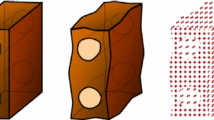Abstract
The focus of CIM is on information as it is the crucial element for integrating all the manufacturing activities. CAPP, as one of the key elements in CIM, needs to extract the manufacturing information such as machining features and precision specifications like surface roughness and tolerances from a geometric model in order to link CAD and CAM. However, these data are not real attributes of the geometric model in most of the current CAD systems. Therefore, human interpretation is inevitable for further processing of CAD model for downstream application like process planning or inspection. This paper proposes a scheme to represent the manufacturing information in a neutral format using STEP technology in order to enable downstream users such as process planner and inspection planner to make correct decisions on process selection, processing conditions, etc. It is shown that by using STEP AP224 manufacturing information encompassing machining features, surface roughness, dimensional and geometric tolerances can be completely represented together with part geometry, which certainly contributes to successful implementation of CIM.
Similar content being viewed by others
References
Ahn, M. J. and Yoo, S. B., 1998, “Study on Standard Product Data Translation Method,”Transactions of the Society of CAD/CAM Engineers, Vol. 3, No. 4, pp. 260–273.
Bley, H., Olterman, R. and Thome, O., 1999, Weber, C., “A Tolerance System to Interface Design and Manufacturing,”Proceedings of the 6th CIRP International Seminar on Computer-Aided Tolerancing, pp. 149–156, Enschede.
Choi, J. H., Lee, S. J. and Choi, D. H., 1998, “Study on Tolerance and Reliability Analysis of Mechanical Systems with Uncertainty,”Transactions of the Korean Society of Mechanical Engineers (A), Vol. 22, No. 1, pp. 215–226.
Choi, J. H., Lee, S. J. and Choi, D. H., 1999, “Reliability-Based Tolerance Optimization of Mechanisms,”Transactions of the Korean Society of Mechanical Engineers (A), Vol. 23, No. 5, pp. 751–762.
Gupta, S. K., 1994, “Automated Manufacturability Analysis of Machined Parts,” Ph. D. Dissertation, University of Maryland.
Ha, S., Hwang, I., Lee, K. and Rho, H.-M., 1999, “Tolerance Representation Scheme for Integrated Cutting Process and Inspection Planning,”Proceedings of the 6th CIRP International Seminar on Computer-Aided Tolerancing, pp. 131–138, Enschede.
Han, J., 1996, “3D Geometric Reasoning Algorithms for Feature Recognition,” Ph. D. Dissertation, Computer Science Department, USC.
Han, J., 1997, “On Multiple Interpretations,”4th ACM SIGGRAPH Symposium on Solid Modeling and Applications, Atlanta, Georgia, May 14–16, pp. 311–321.
Han, J. and Requicha, A. A. G., 1998, “Feature Recognition from CAD Models,”IEEE Computer Graphics and Applications, Vol. 18, No. 2, pp. 80–94.
Han, J., 1998, Feature Recognition: the State of the Art,Transactions of the Society of CAD/CAM Engineers, Vol. 3, No. 1, pp. 68–85.
ISO, 1994, ISO 10303-203, Part 203: Application Protocol: Configuration Controlled Design.
ISO, 1994, ISO 10303-224, Part 224: Application Protocol: Mechanical Product Definition for Process Planning Using Machining Features.
ISO, 1999, ISO 10303-47, Part 47: Integrated Generic Resource: Tolerances.
ISO TC184/SC4/WG12, 1999, Part 519: Application Integrated Construct: Geometric Tolerances,http://www. mel. nist. gov/step/parts/part517/is/tcl.
Kim, I. H. and Kim, E. J., 1997, Design Data Exchange in an Integrated Architectural Design Environment: A Product Model Approach Using STEP Technology,Transactions of the Society of CAD/CAM Engineers, Vol. 2, No. 1, pp. 44–52.
Kyprianou, L. K., 1980, Shape Classification in Computer Aided Design, Ph. D, Dissertation, University of Cambridge.
Lee, I.-H., 1998, Automatic Recognition of Machining Features with Surface Reoughness, M. S. Thesis, Sung Kyun Kwan University (in Korean).
Maropoulos, P. G., 1995, Review of Research in Tooling Technology, Process Modeling and Process Planning, Part II: Process Planning,Computer Integrated manufacturing Systems, Vol. 8, No. 1, pp. 13–20.
Owen, J., 1993, STEP: An Introduction, Information Geometers, UK.
Park, M. W., Ko, H. and Sohn, Y., 1994, “A System for Recognition and Modification of Machining Features on Prismatic Components,”KSME International Journal, Vol. 8, No. 2, pp. 144–151.
Park, K. H., Han, H. S. and Park, T. W., 1996,Journal of the Korean Society of Precision Engineering, A Study on Tolerance Design of Mechanisms Using the Taguchi Method, Vol. 13, No. 6, pp. 66–77.
Park, S. H. and Lee, K. W., 1996, “Mathematical Representation of Geometric Tolerances: Part I,”Journal of the Korean Society of Precision Engineering, Vol. 13, No. 6, pp. 78–89.
Park, J. M., Lee, C. S. and Roh, H. M., 1999, “Compound Feature Recognition on Prismatic Parts from 2D Drawings,”Transactions of the Korean Society of Mechanical Engineers (A), Vol. 23, Noo. 4, pp. 571–577.
Roh, H. M., 1993, “Some Issues in Computer Aided Process Planning for Integration of Manufacturing Information,”Journal of the Korean Society of Precision Engineering, Vol. 10, No. 3, pp. 25–30.
Schenck, D. and Wilson, P., 1994, “Information Modeling: the EXPRESS Way,” Oxford University Press.
SCRA, 1995, “Final Report for the RAMP Site Proveout of STEP Filesets Project Phase I,”http://ramp.scra.org/step_spp_phl.
SCRA, 1995, Product Data Protocols STEP AP224,http://ramp.scra.org/ap224_desc.html.
SCRA, 1995, “Final Report for STEP Driven Manufacturing at Small and Medium Manufacturers Pilot Project,”http://ramp.scra.org/step_smmfinal.
Sormaz, D., 1994, “Knowledge-based Integrative Process Planning System using Feature Reasoning and Cost-based Optimization,” Ph. D. Dissertation, Industrial and Systems Engineering Department, USC.
ST-DeveloperTM, 1996, ROSE library Reference Manual, STEP TOOLSTR (2nd ed.).
Suh, H. W., 1994, “Incremental Feature Generation and Modification during Design Evolution,”KSME International Journal, Vol. 8, No. 4, pp. 422–435.
Unigraphics Solutions Inc., Parasolid On-Line Documentation, 1998.
Wittmann, M., 1999, “Integrated Tolerance Information System,”Proceedings of the 6th CIRP International Seminar on Computer-Aided Tolerancing, pp. 375–382, Enschede.
Author information
Authors and Affiliations
Corresponding author
Rights and permissions
About this article
Cite this article
Kang, M. Neutral representation of tolerance information for process planning using STEP AP 224. KSME International Journal 14, 1337–1347 (2000). https://doi.org/10.1007/BF03191918
Received:
Revised:
Issue Date:
DOI: https://doi.org/10.1007/BF03191918




